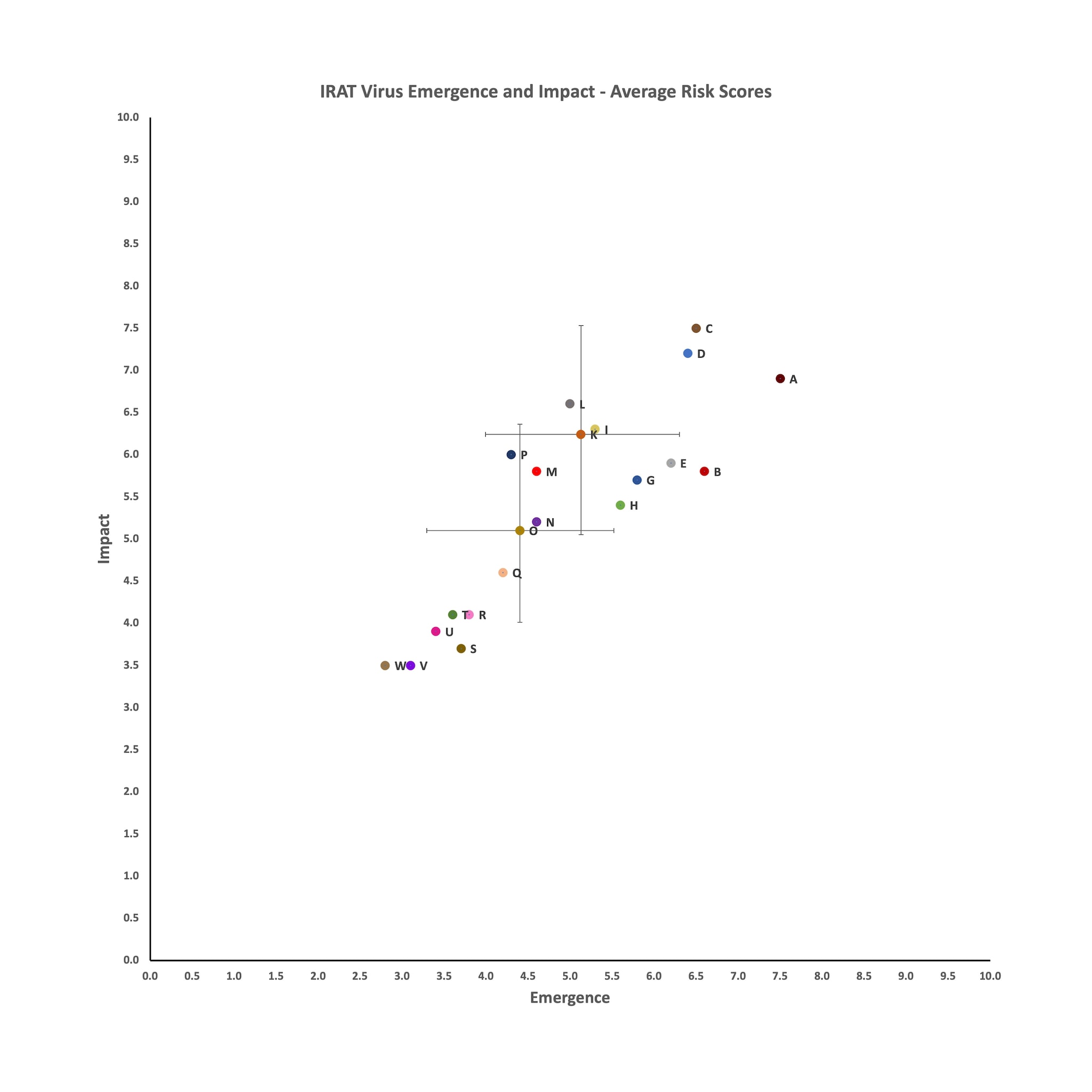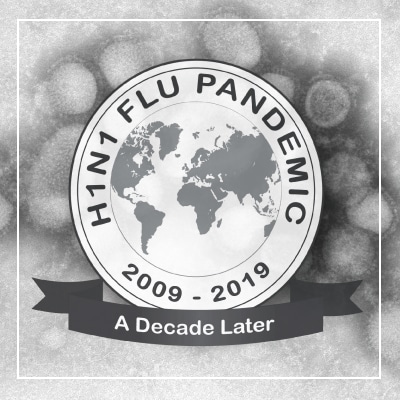Summary of Influenza Risk Assessment Tool (IRAT) Results
On July 4, 2023, CDC published a new IRAT assessment for A(H5N1) clade 2.3.4.4b [A/mink/Spain/3691-8_22VIR10586-10/2022]. This virus was associated with an outbreak among mink at a mink farm in Spain in 2022. The H5N1 bird flu viruses that are causing outbreaks in wild birds and poultry, occasional infections in mammals, and rare human infections are H5N1 clade 2.3.4.4b viruses. A risk assessment for the potential ‘emergence’ and ‘public health impact’ for those viruses was originally conducted in March 2022 using A/American wigeon/South Carolina/AH0195145/2021. This updated assessment includes new information available since then, including from eight additional human cases. This updated assessment using the mink virus indicates that this virus has scored slightly higher in some risk elements compared with the previously assessed H5N1 clade 2.3.4.4b virus isolated from an American wigeon duck in 2022. However, the mean-high and mean-low acceptable score ranges for these viruses overlap, indicating that these viruses remain similar, and their overall risk scores remain “moderate.” New data visualizations have been added to this page to aid in the comparison of these viruses.
The Influenza Risk Assessment Tool (IRAT) is an evaluation tool conceived by CDC and further developed with assistance from global animal and human health influenza experts. The IRAT is used to assess the potential pandemic risk posed by influenza A viruses that are not currently circulating in people. Input is provided by U.S. government animal and human health influenza experts. More information about the IRAT, including a description of its methodology and definitions for its risk elements and categories, is available at Influenza Risk Assessment Tool (IRAT) Questions and Answers. The IRAT is updated when new zoonotic or novel influenza viruses with pandemic potential emerge or undergo a change in characteristics that prompts the need for a new assessment.
Report summaries for each of the viruses assessed by the IRAT are available from the Virus Descriptions and Report Summaries webpage. In addition, PDFs of the full IRAT reports are available for download for some of the assessed viruses.
Special Note Regarding Interpretation of the IRAT
The IRAT is a tool used to assess the potential pandemic risk posed by influenza A viruses. It is designed for use by public health professionals for pandemic preparedness purposes. It is not intended to be used to determine the current public health risk to the general public. The current risk to the general public from contemporary H5N1 avian influenza (bird flu) viruses is still considered low. The current H5N1 bird flu continues to be mostly an animal health issue. Human infections with H5N1 bird flu are rare, and these viruses are not well-adapted for spreading among people, as they do not currently have the ability to easily infect the human upper respiratory tract. Most past human infections have occurred following close, unprotected contact with sick or dead birds.
Summary Results of Influenza A Viruses Assessed Using IRAT
Footnote: This dot graph plots the average weighted risk scores for “public health impact” and “emergence” for viruses subjectively assessed by the IRAT’s panel of expert reviewers. Virus ‘K’ represents the April 2023 assessment for the A(H5N1) Clade 2.3.4.4b [A/mink/Spain/3691-8_22VIR10586-10/2022] virus. Virus ‘O’ represents the March 2022 assessment using the previous A(H5N1) Clade 2.3.4.4b virus [A/American wigeon/South Carolina/AH0195145/2021]. The ranges for the mean-high and mean-low acceptable scores for viruses ‘K’ and ‘O’ for both impact and emergence were added. As shown on the graph, virus ‘K’ scores higher than virus ‘O’ for risk of emergence and risk of public health impact, but the ranges for the mean-high and mean-low acceptable scores for both viruses overlap, indicating that these viruses remain similar. More information about how the IRAT calculates risk scores is available at Influenza Risk Assessment Tool (IRAT) Questions and Answers.
Note: The letters in the ‘dot’ column of this table correspond to those in the dot graph above.
Footnote: This bar graph shows how the April 2023 assessment for the A(H5N1) Clade 2.3.4.4b [A/mink/Spain/3691-8_22VIR10586-10/2022] virus compares to the March 2022 assessment for the A(H5N1) Clade 2.3.4.4b [A/American wigeon/South Carolina/AH0195145/2021] virus, across each of the IRAT’s 10 risk elements. These 10 risk elements are weighted differently when scoring a virus’ risk of emergence versus its risk of public health impact. As indicated by the bar graphs and the table, the mink virus scores higher than the previously assessed American wigeon virus across 6 out of the 10 risk elements, including the following: antiviral treatment options, disease severity and pathogenesis, genomic analysis, human infections, infections in animals, and transmission in animal models. Definitions for these risk elements and additional information on how these risk elements are weighted when determining viruses’ risk of emergence versus risk of public health are available at Influenza Risk Assessment Tool (IRAT) Questions and Answers.

